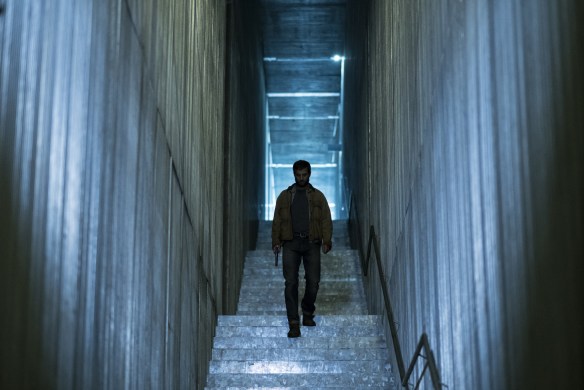Hello folks, and welcome back to Wrong Every Time. With the original three seasons complete and the films proving a bust, this week my house munched through the 2008 Slayers revival Revolution, featuring the same director and much of the same cast as the original ‘90s entries. While the transition from nostalgic cel photography is unfortunate, this season proved itself a fine addition to the Lina Inverse canon, carrying on the spirit of the original series. Meanwhile, the introduction of Brennan Lee Mulligan into Critical Role gave us the perfect excuse to return to Dimension 20, where we’re now following the Bad Kids on their quest to retrieve the Crown of the Nightmare King. Though the team moving away from fully designed sets initially put us off, it’s actually been easy to reintegrate into this season’s Theater of the Mind-style combat, which undeniably facilitates fights of greater scope and complexity than a physical board would allow. All this DnD viewing has actually inspired me to get started on this year’s Christmas DnD Adventure, a much-loved annual tradition around my place. Perhaps more on that later, but for now, let’s run down the week in films!
First up this week was Upgrade, a recent action film starring Logan Marshall-Green as Grey Trace, a traditional auto mechanic in a world where classic automobiles are largely a thing of the past. With AIs now integrated into practically every element of daily life, Grey remains skeptical of this invasive new era – that is, until an inexplicable attack leaves his wife dead and himself a quadriplegic. In the depths of despair, Grey is given hope in the form of a secret advanced chip named STEM, which is implanted into the back of his neck to recover his mobility. However, it turns out that STEM actually has a mind of its own, leading to an odd sort of buddy cop dynamic as Grey and STEM track down his wife’s killers.
Upgrade is an efficient and disconcerting action-thriller, offering a window into a dystopian future that in our era of self-driving cars and insatiable AI integration seems all but inevitable. Yet in spite of its convincing background ornamentation, the film never forgets it is first and foremost a roller coaster, charging efficiently through Grey’s investigation, and swiftly building STEM from a mild-mannered JARVIS into something far more nuanced and unsettling.
Writer-director Leigh Whannell’s experience writing on James Wan films clearly aids him here, as Upgrade proceeds with the confidence and brutality of a great ‘00s horror feature. Alongside generally solid performances, the film’s signature trick is how Marshall-Green’s body moves when STEM is in control. Dispensing with the countless tiny movements we embrace for the sake of balance, safety, or just habit, STEM fights like a puppet on strings, wide arm sweeps and rigid spins crafting a combat style that feels convincingly alien to human experience. A tidy, nasty, and altogether effective feature.
Having been so impressed by Scream’s fifth-entry revival, we charged on ahead into the recent Scream 6, and discovered yet another surprisingly satisfying horror movie. Due in part to Neve Campbell’s return negotiations falling through, this chapter focuses heavily on the new generation of characters, with altogether positive results. Melissa Barrera, Jenna Ortega, Jasmin Savoy Brown, and Mason Gooding are frankly as strong of a core cast as this franchise has ever had, and with characters you actually care about at the center, it’s easy to feel a genuine sense of threat (and also to forgive the franchise’s copious fake-out kills).
Between the strong cast and Bettinelli-Olpin/Gillet’s persistently reliable direction, Scream 6 is a generally successful horror whodunnit, accented by some genuinely nasty kill scenes. Sadly, the ultimate villains of this film are far less interesting than V’s eventual killer, and what’s more, it’s clear the franchise is once again grasping for a conceptual focus.
The template established by Wes Craven dictates that it’s never enough for a new Scream to simply offer a copycat killer – they must in some way be commenting on their own franchise form, whether it’s the original’s focus on slashers, the sequel’s focus on slasher sequels, or V’s focus on recent prestige “requels.” As the sequel to a requel, Scream 6 essentially serves as an echo of the original sequel (the cast are transposed to college, and several key sequences are repeated), but that’s kinda weak tea relative to the firm conceptual framework of its predecessor. I’m actually quite enjoying these revival films, but I can’t imagine where the franchise’s meta commentary can stretch from here (an uncertainty heightened by the franchise’s second implosion).
We then checked out Bloodshot, a Vin Diesel action vehicle wherein he plays Ray Garrison, a U.S. Marine who is tracked down and killed alongside his wife in retribution for a prior operation. Garrison then wakes up on an operating table, his memories erased, his body now equipped with millions of self-restoring nanomachines. As a newly minted one-man army, Garrison’s new duties are complicated by nightmares of his past life, leading him to ultimately rebel against his new company of supersoldiers.
Well, there’s more to it than that, but that’s the basic gist. Bloodshot’s narrative turns are engaging enough that for once I’m actually not going to spoil them here, and Diesel himself is as endearingly stoic as ever, though trapped within a role that leaves less room for personality than Toretto or even Riddick. Still, he cuts a fine form across Bloodshot’s first half, echoing the superior Riddick features in his implacable advance on all those who have wronged him. It is in the second half, where Bloodshot more fully embraces its hero comic origins, that the reins start to go loose. Busy and weightless CG battles set Bloodshot’s later encounters directly alongside its Marvel movie contemporaries, making for a watchable but frustratingly self-sabotaging viewing experience. Nature is starting to heal at this point, but the action films of the 2010s and early 2020s will suffer a permanent scar from studios’ insistence that bargain-rate CG is actually the height of cinematic spectacle.
Hungry for some agreeable junk food, we then screened Warlock, a 1989 feature starring Julian Sands as the titular son of Satan. Captured in 1691 and destined for the gallows, Sands prays to his dark master for freedom, and is answered in a most unusual way: by being teleported to the 20th century, alongside pursuing witch hunter Redferne (Richard E. Grant). There, Redferne will have to team up with modern gal Kassandra (Lori Singer) in order to prevent the warlock from assembling the Grand Grimoire, and apparently ending the universe as we know it.
Warlock is a low-budget mixture of The Terminator and Wishmaster, combining the first’s time travel hunt conceit with the second’s spell-casting, scenery-chewing villainy. It is miles and miles from a genuinely good film, but there’s still fun to be found in the dynamic between Grant and cast standout Singer, as well the film’s gloriously terrible special effects. The highlight here is absolutely the film’s attempts to convey the Warlock in flight, which alternately involve suspending him in a nausea-inducing harness or simply transposing him against a still background, an effect that wouldn’t feel out of place in a Tim and Eric sketch. I ultimately can only recommend this one in the spirit of Mystery Science Theater, but when considered on those terms, it’s a fine viewing.




